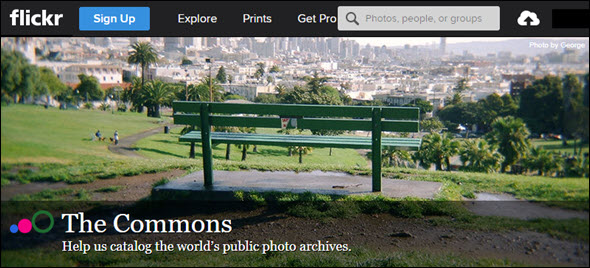The Commons on Flickr
An announcement that crossed The Legal Genealogist‘s desk a short while ago brought to mind an uncommonly good resource for genealogists and historical researchers of all stripes.
It’s called, simply, The Commons.
And its goal, it says, is “to share hidden treasures from the world’s public photography archives.”1 Including a whole lot of genealogically valuable images and documents.
It’s on the website Flickr.com, a site many photographers and individuals use to post their own images. And it began there more than a decade ago:
The Commons was launched on January 16 2008, when we released our pilot project in partnership with The Library of Congress. Both Flickr and the Library were overwhelmed by the positive response to the project! Thank you!
The program has two main objectives:
1. To increase access to publicly-held photography collections, and
2. To provide a way for the general public to contribute information and knowledge. (Then watch what happens when they do!)2
The specific announcement that brought this to mind came from the British Library in October:
Today we release 18,000 digital images of historic maps, views and texts from the Topographical Collection of King George III into the public domain.
The collection has been digitised as part of a seven-year project to catalogue, conserve and digitise the collection which was presented to the Nation in 1823 by King George IV. This is the first of two planned image releases.
The images are made available on the image sharing site Flickr, which links to fully searchable catalogue records on Explore the British Library.3
Now — to a genealogist — there’s not a whole lot better than 18,000 maps and related items being released into the public domain. That means they’re free for us to use, without restriction and without concern of any kind for copyright.4
But then you look at what else is available on The Commons and — yeah, there really is more and better.
Let’s start with just some of the participating institutions: the Library of Congress; the British Library; the Smithsonian Institution; the State Library of New South Wales, Australia; The Library of Virginia; the National Library of New Zealand; the New York Public Library; the Nationaal Archief of the Netherlands; State Library and Archives of Florida; the National Galleries of Scotland; The U.S. National Archives; The National Archives UK; Texas State Archives; Public Record Office of Northern Ireland… I could go on and on. In fact, on my computer monitor, it takes seven full screens to list the participating institutions from Sweden, Spain, Brazil, Armenia and so so many more.5
Go on from there to the goodies.
Want to see what life was like in, oh, say, Finland Norway? Take a look at the collection from the Nasjonalbiblioteket, the National Library of Finland Norway. (For Finland, try the Yle Archives – Yle Elävä arkisto, the archives of Finnish Broadcasting, or the collection of art of Finnish artist Akseli Gallen-Kallela in the collection of the Gallen-Kallela Museum. And h/t to reader Marilyn Dahneke who spotted the typo…) In Estonia? Try the collection from the National Archives of Estonia. Australia? Try the collection from the National Library of Australia.
Somebody in your family might be included in the image collection from the Imperial War Museum in the United Kingdom? Check out the IWM collection. Here in the United States, well, I could spend hours in the historical photos in the George Eastman Museum collection. Roots in Montreal? Try the collection of the Musée McCord Museum.
And that’s just the tiniest taste of what’s there.
Not to mention 18,000 way cool maps and related items from the British Library.
Check it out.
It’s uncommonly good.
Cite/link to this post: Judy G. Russell, “The uncommonly good Commons,” The Legal Genealogist (https://www.legalgenealogist.com/blog : posted 9 Nov 2020).
SOURCES
- “The Commons: Welcome,” Flickr.com (https://www.flickr.com/ : accessed 9 Nov 2020). ↩
- Ibid. ↩
- “The K.Top: 18,000 digitised maps and views released,” British Library Maps and views blog, posted 13 Oct 2020 (https://blogs.bl.uk/ : accessed 9 Nov 2020). Okay, so I’m a little late writing about this. We in the United States have been a little distracted lately… ↩
- See “Definitions: Where is the public domain?,” U.S. Copyright Office (https://www.copyright.gov/ : accessed 9 Nov 2020). ↩
- See “Participating Institutions, The Commons,” Flickr.com (https://www.flickr.com/ : accessed 9 Nov 2020). ↩




This was definitely NOT on my to-do list today, Judy!! I’m going to have to set an alarm as I pick and poke through these treasures. (Merci!)